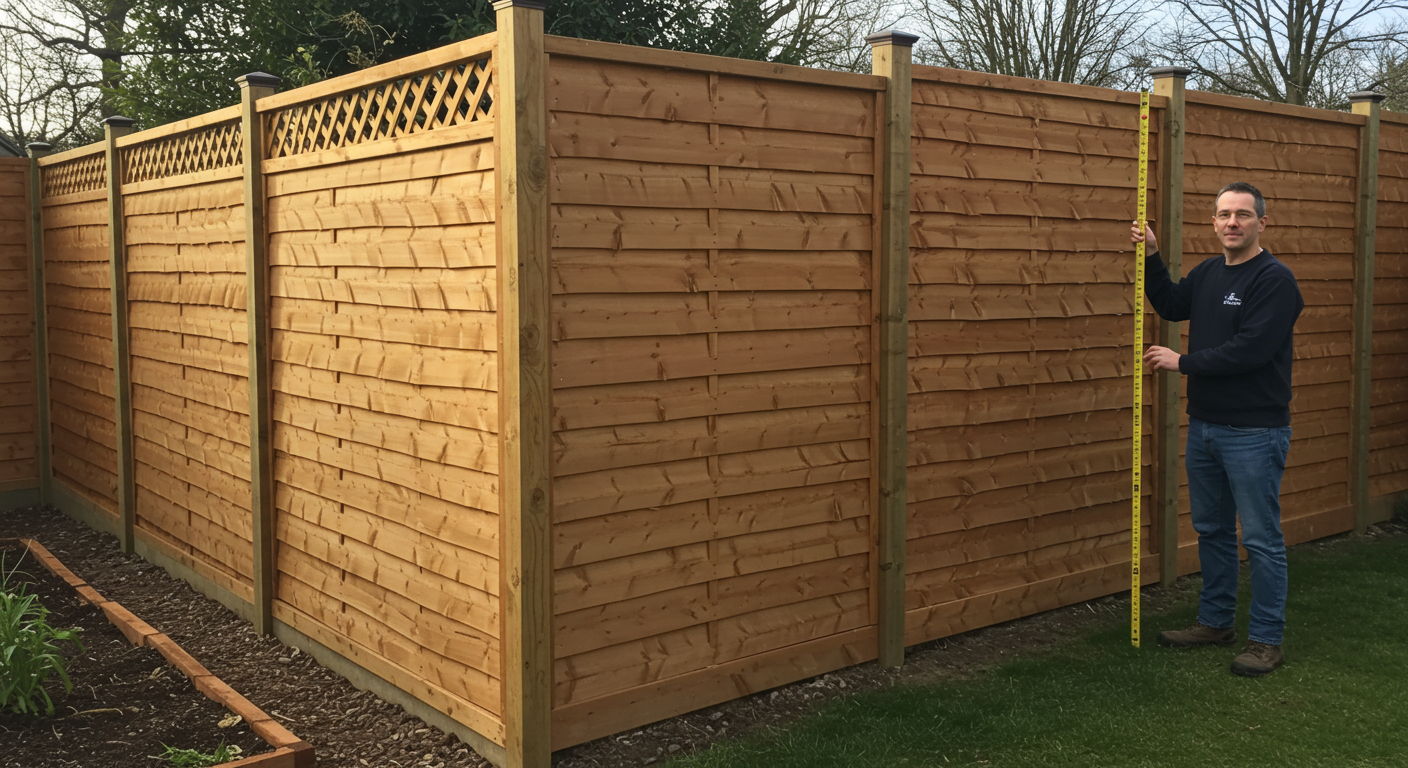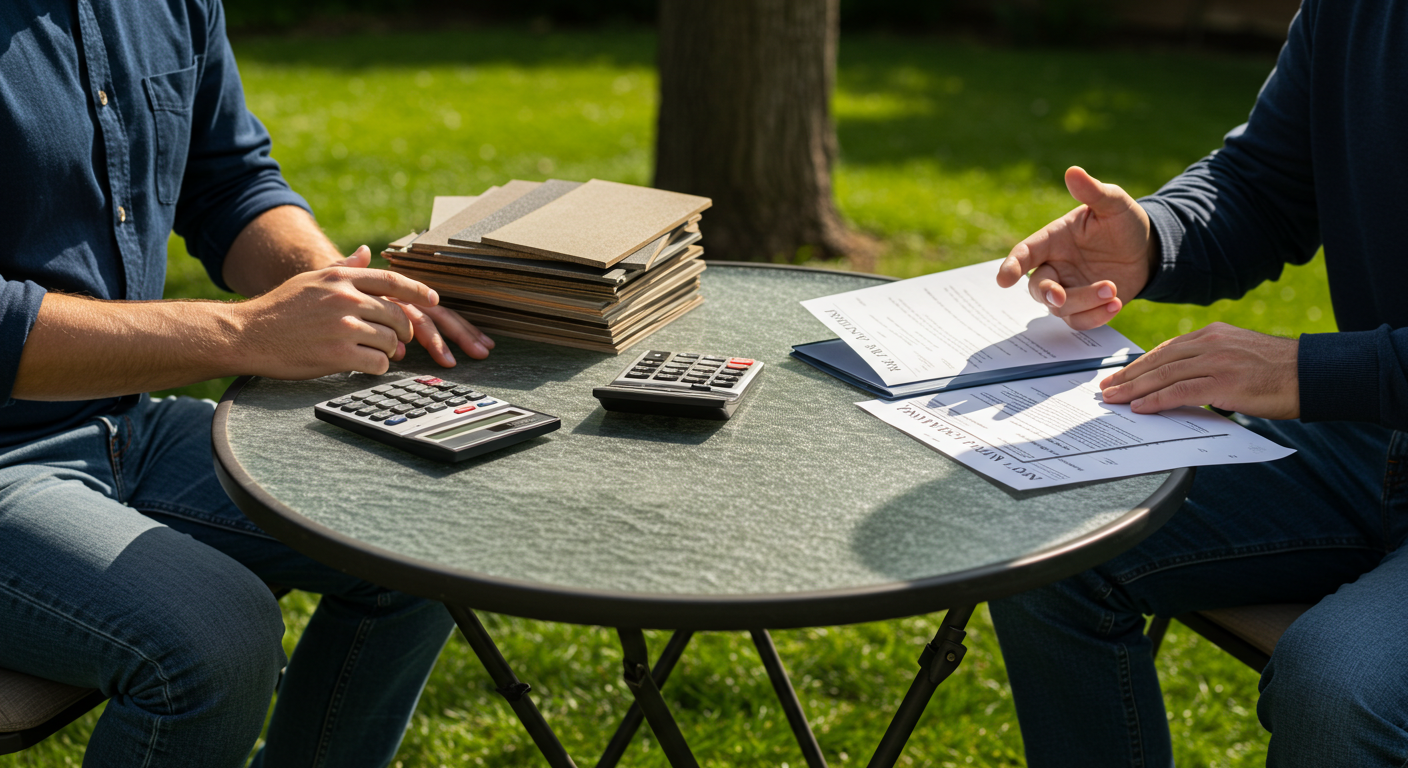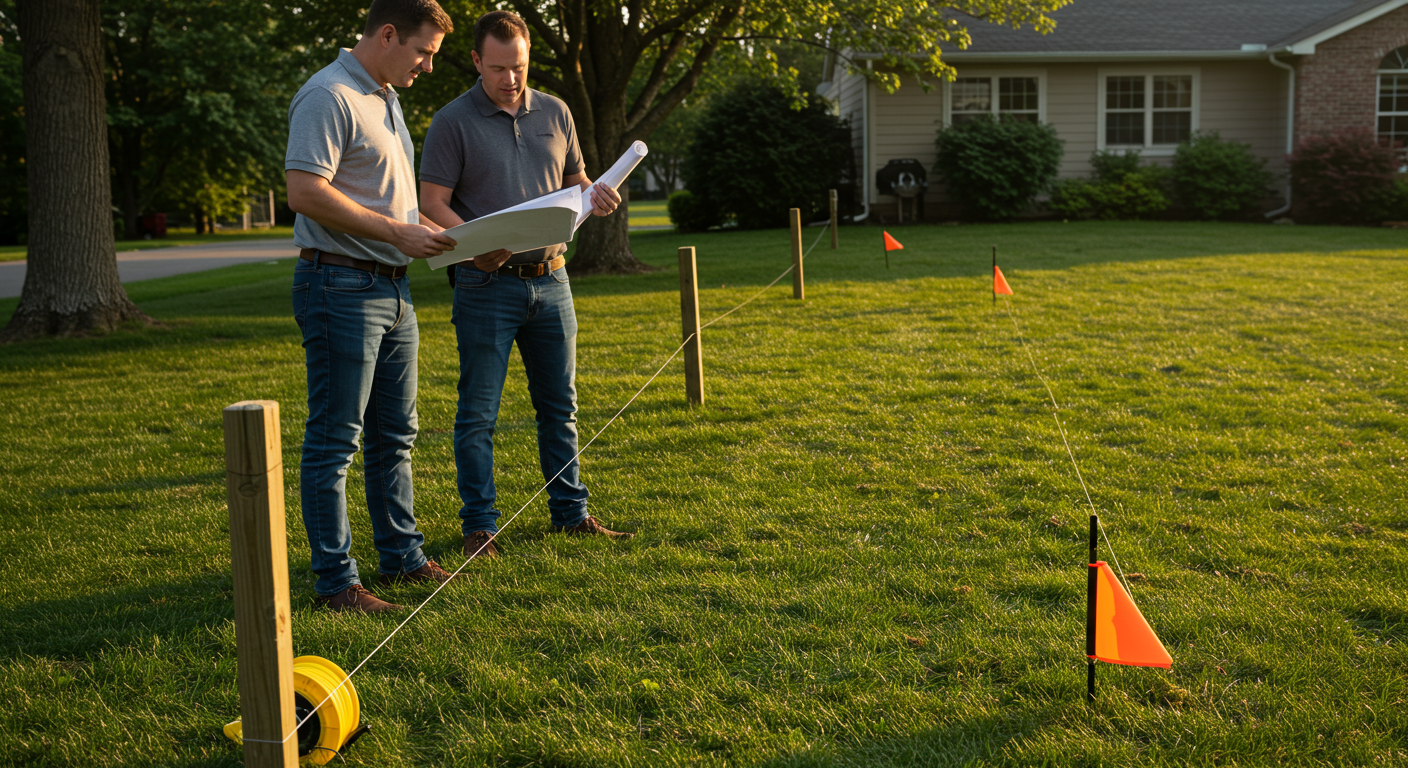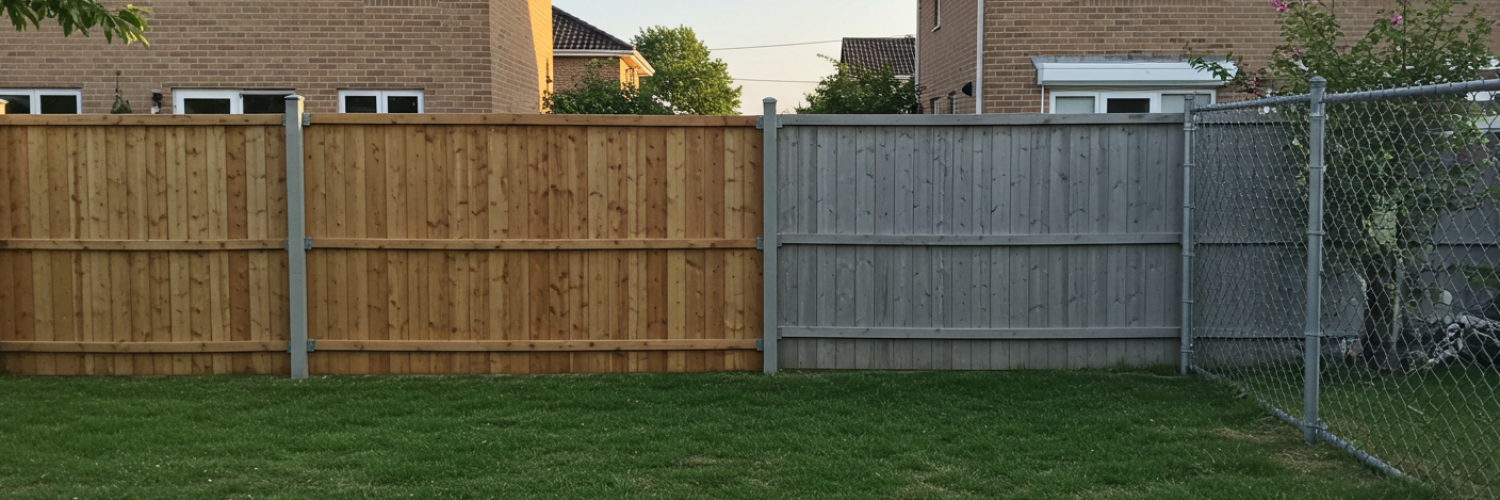Planning a fence installation for your property? Understanding the costs involved is crucial for making informed decisions. This comprehensive guide fromJH Landscapes breaks down fence installation costs by material and size, helping you budget effectively for your project. From wood to vinyl, aluminum to chain link, we’ll explore various fencing options and their associated costs.
Whether you’re looking to enhance privacy, improve security, or simply define your property boundaries, knowing what factors influence fence installation costs will help you get the best value. Let’s dive into the details of fencing materials, sizes, and the various elements that impact your overall investment in a new fence.
Identify Key Cost Drivers Before You Install a Fence
When planning your fence installation project, several key factors will determine your final cost. Understanding these elements helps you create a realistic budget and avoid unexpected expenses.
The most significant cost factor is your choice of fencing material. Wood fences typically range from $15 to $30 per linear foot installed, while vinyl can cost between $20 and $40 per linear foot. Metal options like aluminum ($25-$40 per linear foot) and wrought iron ($30-$55 per linear foot) represent higher-end investments, while chain-link offers a more budget-friendly option at $10-$20 per linear foot.
Your fence’s height and length directly impact material quantities and labor requirements. A standard 6-foot privacy fence costs significantly more than a 4-foot decorative fence simply because it requires more materials. Similarly, the total perimeter length of your fence determines overall project costs – a larger property boundary naturally requires more materials and labor.
Terrain challenges on your property can substantially increase installation complexity and costs. Sloped landscapes, rocky soil, or heavily wooded areas require additional preparation work. According to landscaping industry data from 2023, difficult terrain can add 10-30% to your total project cost.
Working with professional fence contractors like JH Landscapes ensures proper installation and can prevent costly mistakes. While DIY fence installation might seem cost-effective initially, professional installation often provides better long-term value through proper techniques and quality workmanship.
If you’re wondering about how much to fence a yard or comparing the cost to put up a fence vs. DIY, this guide covers everything you need to know to make an informed decision.
Compare Fencing Materials to Choose the Right Fit for Your Budget
Different fencing materials offer varying benefits, aesthetics, and price points. Let’s examine the most popular options and their associated costs.
Wood Fencing
Wood remains one of the most popular fencing materials due to its natural appearance and versatility. Cedar, pine, and redwood are common choices, with costs typically ranging from $15 to $30 per linear foot installed:
- Cedar offers natural resistance to insects and rot, making it a premium choice at $20-$30 per linear foot.
- Pine provides a more economical option at $15-$25 per linear foot but may require more maintenance.
- Redwood, known for its rich color and durability, represents the high end at $25-$35 per linear foot.
Wood fences require regular maintenance, including staining or sealing every 2-3 years, which adds to their lifetime cost. According to 2024 maintenance cost data, expect to spend $1-$3 per square foot for professional sealing and staining services.
Vinyl Fencing
Vinyl fencing has gained popularity for its durability and low maintenance requirements. Initial costs range from $20 to $40 per linear foot installed, making it more expensive than wood initially.
The higher upfront investment brings significant long-term benefits. Vinyl won’t rot, warp, or require painting, saving on maintenance costs over time. Many manufacturers offer 20- to 30-year warranties on their products, demonstrating their confidence in vinyl’s durability.
Style options affect pricing, with simple privacy panels costing less than decorative options with post caps and lattice details. Premium vinyl that resists UV fading and extreme weather conditions commands higher prices but provides better long-term performance.
Metal Fencing Options
Metal fencing provides security and durability with varying price points depending on the specific metal chosen.
Aluminum fencing costs between $25 and $40 per linear foot installed. It offers rust resistance and minimal maintenance requirements, making it popular for both residential and commercial applications. Decorative aluminum fencing with ornamental details can reach the higher end of this range.
Steel fencing provides maximum security for $30-$50 per linear foot, installed. Its strength makes it ideal for security applications, though it may require anti-rust treatments in humid climates.
Wrought iron represents the premium option at $30-$55 per linear foot. While expensive, its classic appearance and exceptional durability make it a favored choice for upscale properties. According to data from our page, Enhance Your Space: Best Landscaping Services in Charlotte, wrought iron fences can last 50+ years with proper maintenance.
Chain-link fencing offers the most economical metal option at $10-$20 per linear foot installed. While not providing privacy, it’s excellent for defining boundaries and securing pets and children. Vinyl-coated chain-link, which offers improved aesthetics and durability, costs slightly more, ranging from $12 to $25 per linear foot.
Measure Fence Dimensions to Estimate Project Costs Accurately

The dimensions of your fence significantly impact your total project cost. Understanding how size influences pricing helps with accurate budgeting.
Standard Fence Heights and Associated Costs
Residential fences typically come in standard heights, each with different material requirements and costs:
- 3-4 Foot Fences (Decorative/Boundary): $10-$25 per linear foot
- 6-Foot Fences (Privacy): $15-$40 per linear foot
- 8-Foot Fences (Maximum Privacy/Security): $20-$50+ per linear foot
Each additional foot of height increases material costs by approximately 15-25%. For example, upgrading from a 6-foot to an 8-foot wood fence might increase your per-linear-foot cost from $25 to $32.
Calculating Total Linear Footage
To estimate your total fencing cost, first measure your property’s perimeter where the fence will be installed. For a rectangular lot, add the length of all four sides requiring fencing. Don’t forget to subtract the width of gate openings from your total.
A typical suburban backyard fence might enclose 150-200 linear feet. At an average cost of $25 per linear foot for a 6-foot privacy fence, this translates to $3,750-$5,000 for materials and installation.
Large properties with extensive boundaries can expect proportionally higher costs. A 2-acre property might require 1,200+ linear feet of fencing, potentially resulting in a $30,000+ project depending on material choices.
If you’re asking how much it costs to fence in a yard or trying to gauge how much it costs to get a fence installed, these estimates provide a helpful baseline.
Account for Hidden Costs to Avoid Budget Surprises
Beyond basic materials and standard installation, several other factors can impact your total fence project cost.
Gates and Access Points
Every fence needs at least one gate, with each addition increasing your overall cost. Standard pedestrian gates (3-4 feet wide) typically add $150-$400 to your project, depending on the material and design complexity.
Driveway gates represent a more significant investment. A basic 10-12 foot double swing gate might cost $500-$1,500, while automated versions with electronic openers can range from $2,000 to $5,000+.
According to customer data from JH Landscapes, approximately 20% of residential fence projects include multiple gates, with most homeowners installing at least one pedestrian gate and one vehicle access point.
Permits and Regulations
Most municipalities require permits for fence installation, typically costing $50-$200, depending on your location. Before proceeding with any fence project, check local zoning regulations regarding fence height, placement, and style restrictions.
Homeowners Association (HOA) approvals may also be necessary if your property is within an HOA-governed community. Some associations charge review fees or require specific materials and designs that could impact your budget.
Site Preparation Costs
Challenging terrain requires additional site preparation work. Clearing vegetation, removing old fencing, or grading uneven ground can add $3-$8 per linear foot to your project cost.
In areas with rocky soil or underground obstacles, special equipment may be needed for post-hole digging, potentially adding $10-$15 per post location to your overall cost.
Weigh DIY vs. Professional Installation to Make the Smart Choice
Many homeowners contemplate DIY fence installation to save on labor costs, but understanding the full picture helps make an informed decision.
Professional Installation Cost Breakdown
Professional fence installation typically includes:
- Materials and delivery (60-70% of total cost)
- Labor (20-30% of total cost)
- Equipment usage (5-10% of total cost)
- Warranty coverage (varies by contractor)
For a typical 200-linear-foot fence project, professional installation might cost $5,000-$10,000, depending on materials and complexity. This includes proper post setting, precise alignment, and efficient completion, usually within 2-3 days for a standard residential project.
Working with experienced contractors like those found through our page, Expert Retaining Wall Installation Charlotte NC Services, ensures proper installation techniques that maximize fence longevity.
DIY Installation Considerations
DIY fence installation can save 20-40% on project costs, primarily through eliminating labor expenses. However, first-time fence installers should consider several factors:
- Equipment Requirements: Post hole diggers, concrete mixers, levels, and other specialized tools may need to be purchased or rented.
- Time Commitment: What professionals complete in days might take weeks for DIY installers, especially on weekends only.
The main challenges DIY installers face include proper post setting (essential for fence stability) and maintaining consistent height on uneven terrain. Improper installation can lead to premature fence failure, potentially eliminating any initial savings.
Factor in Location and Timing for Better Cost Planning
Fence installation costs vary significantly by location due to several factors, including labor rates, material availability, and climate considerations.
Urban areas typically see higher installation costs than rural locations due to increased labor rates and potential access challenges. In major metropolitan areas, expect to pay 10-20% above national averages, while rural installations might cost 5-15% less.
Seasonal timing can also impact pricing. Many fence contractors offer discounted rates during off-peak seasons (typically late fall and winter in many regions). According to industry data from 2024, scheduling your fence project during these periods might save 10-15% compared to peak spring and summer rates.
Local material availability influences costs as well. Regions with abundant lumber production often have more competitive pricing for wood fencing, while areas with limited local manufacturing might see higher costs for specialty materials like vinyl or ornamental aluminum.
Climate considerations affect material recommendations and installation techniques. In hurricane-prone regions, reinforced installations may add 10-15% to standard costs. Similarly, areas with freeze-thaw cycles require deeper post footings, potentially increasing installation labor and concrete costs.
Explore Financing Options to Make Your Fence Project Affordable

For larger fence projects, various financing options can help manage the upfront investment.
Many professional fence contractors offer financing plans, typically ranging from 6-36 months with competitive interest rates. Some may provide interest-free periods for qualified customers, usually for 6-12 months on projects exceeding a minimum value (often $2,000+).
Home improvement loans represent another option for fence financing. Personal loans typically offer rates between 5-15% depending on credit score, while home equity options might provide lower rates but use your home as collateral.
Some homeowners leverage credit cards with introductory 0% APR offers for smaller fence projects. This approach works best when you can pay off the balance before the promotional period ends.
For fence projects that improve security or address specific needs, it’s worth noting that fence installation may qualify for tax advantages in certain situations. Business property fencing is typically depreciable, while some residential security fencing might qualify for home office deductions if you work from home. Always consult a tax professional regarding potential deductions.
Frequently Asked Questions
How long does a typical fence installation take?
For a standard residential property (150-200 linear feet), professional installation typically takes 2-3 days. Larger properties or complex installations involving difficult terrain might extend to 4-7 days.
Weather conditions can also impact timelines, as post holes typically shouldn’t be dug during heavy rain, and concrete needs proper curing time. DIY installations generally take significantly longer, with weekend warriors often requiring 2-4 weekends to complete what professionals finish in days.
What is the most cost-effective fencing material?
Chain-link fencing offers the lowest initial cost at $10-$20 per linear foot installed. While not providing privacy, it effectively defines boundaries and offers security for pets and children. For those seeking privacy, pressure-treated pine represents the most economical option, typically costing $15-$25 per linear foot installed.
When considering long-term value, vinyl fencing often provides the best return despite higher upfront costs, as it requires minimal maintenance and offers a lifespan of 20+ years.
Do I need a permit to install a fence?
Most municipalities require permits for fence installation, though requirements vary by location. Typically, permits cost $50-$200 and may require submission of property surveys and fence design plans. Some areas exempt fences below certain heights (often 4 feet) from permit requirements.
Additionally, if your property is governed by a Homeowners Association, you’ll likely need HOA approval before installation. Always check local zoning regulations regarding height restrictions, setback requirements, and placement relative to property lines.
How can I reduce my fence installation costs?
Several strategies can help reduce fencing costs without compromising quality. Consider installing a partial fence rather than enclosing your entire property. Opting for a 4-foot fence instead of a 6-foot fence can reduce material costs by 20-30%.
Comparing quotes from multiple contractors often yields savings of 10-15%. For DIY-inclined homeowners, handling site preparation and cleanup while hiring professionals for the technical installation creates a middle-ground approach that can save 15-20% off full-service installation costs.
How long do different fence types typically last?
Fence longevity varies significantly by material and maintenance. Wood fences typically last 10-15 years with regular maintenance (staining/sealing every 2-3 years). Vinyl fencing offers 20-30 years of life with minimal maintenance requirements.
Aluminum fences typically last 20-30+ years with virtually no maintenance needed. Steel and wrought iron can last 30-50+ years but require periodic rust treatment and repainting. Chain-link fencing offers 15-20 years of service, with vinyl-coated versions extending to 20-25 years. Proper installation significantly impacts longevity regardless of material choice.
Plan Your Fence Project with Confidence and Local Support

Understanding fence installation costs helps you make informed decisions for your property improvement project. By considering material options, property dimensions, and additional factors like gates and permits, you can develop a realistic budget for your fence installation.
Remember that while initial costs are important, long-term value comes from choosing quality materials and proper installation techniques. Whether you prioritize privacy, security, aesthetics, or all three, there’s a fencing solution that fits your needs and budget.
Take time to research your options, get multiple quotes from reputable contractors, and plan carefully to ensure your fence investment delivers lasting value for your property.
About JH Landscapes
JH Landscapes specializes in comprehensive landscaping and hardscaping services, including professional fence installation across the Charlotte region. With over 15 years of experience transforming residential and commercial properties, our team combines technical expertise with design knowledge to create beautiful, functional outdoor spaces.
Our fence installation services include a wide range of materials, from classic wood privacy fences to modern vinyl, ornamental aluminum, and security-focused chain-link options. We handle every aspect of fence installation, including site preparation, proper post setting, precise alignment, and professional finishing.
We pride ourselves on providing transparent pricing, quality craftsmanship, and exceptional customer service throughout every project. Our team has completed hundreds of fence installations throughout Charlotte and surrounding communities, helping homeowners enhance their property values while creating more usable outdoor spaces.
Contact our team today to discuss how our fencing expertise can help you improve your property’s functionality, security, and curb appeal. Our certified professionals work closely with clients to understand their specific needs, whether for privacy, security, property definition, or aesthetic enhancement.

